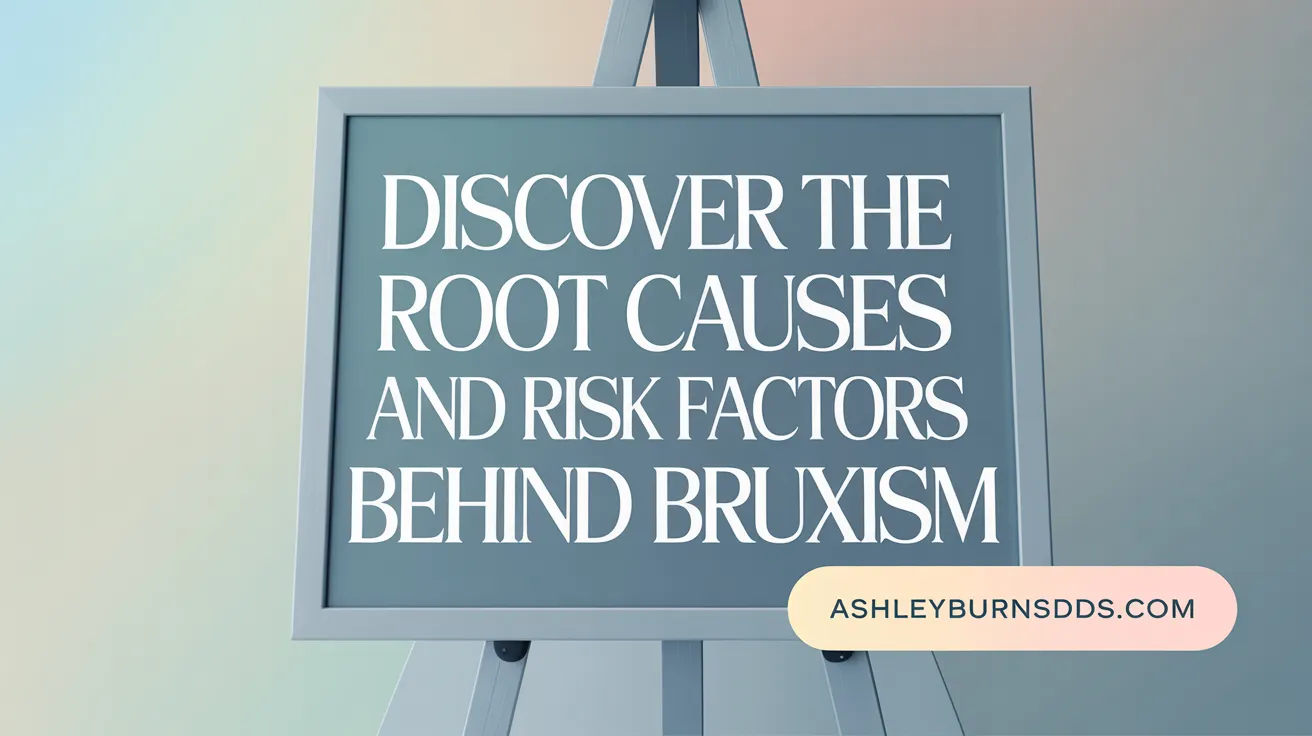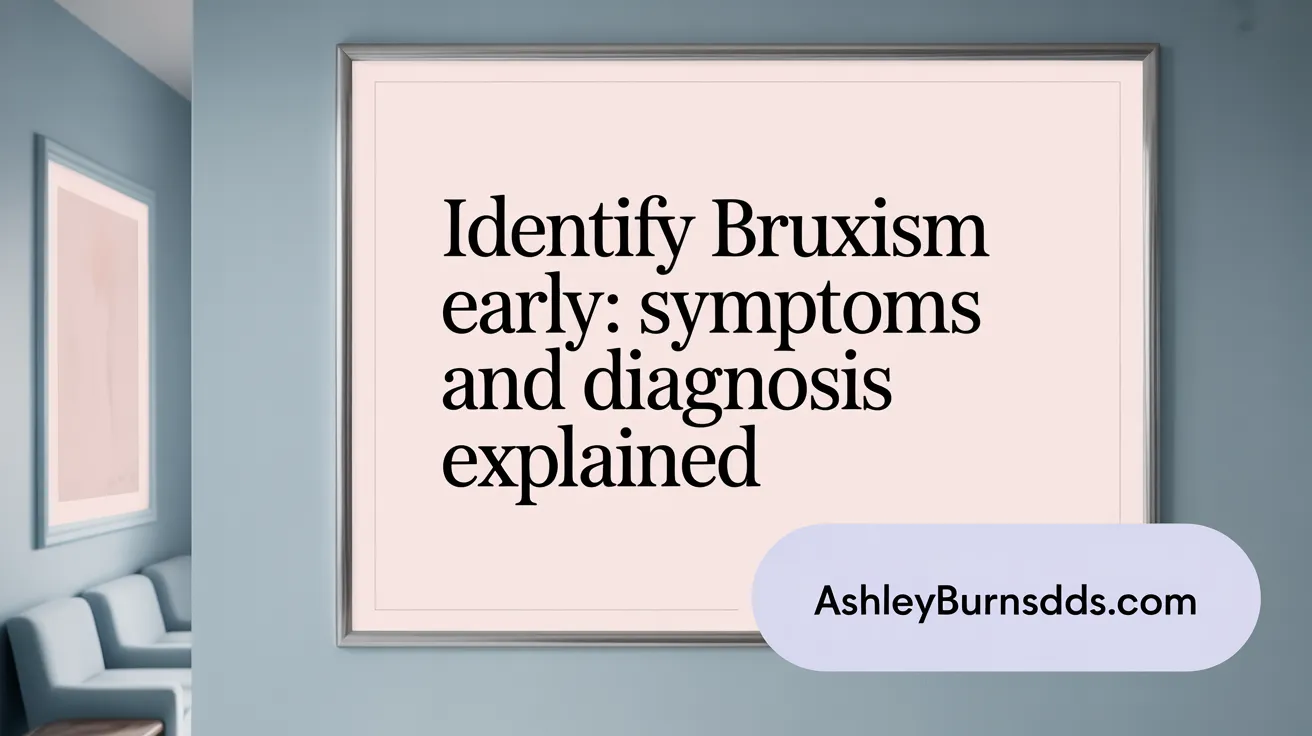Introduction to Bruxism
Bruxism, commonly known as teeth grinding or clenching, is a condition impacting a significant portion of the population. It involves repetitive jaw muscle activity leading to grinding or clenching of the teeth either during the day or night. Though often unnoticed, bruxism can lead to considerable dental damage and other health issues if left unmanaged. This article explores the nature of bruxism, its causes, symptoms, diagnosis, treatment options, and strategies for prevention and management.
What Is Bruxism? Definition and Overview

What is bruxism and how is it defined?
Bruxism is a condition characterized by involuntary or habitual grinding, clenching, or gnashing of the teeth. This activity often occurs during wakefulness or sleep and can lead to dental damage, jaw pain, headaches, and issues with the temporomandibular joint (TMJ). It involves abnormal sensorimotor activity within the central nervous system, making it a movement disorder. Learn more about What is bruxism?.
Types of bruxism: awake vs sleep bruxism
There are two main forms of bruxism: awake bruxism and sleep bruxism. Awake bruxism happens during the day when a person is conscious and often is linked to psychological factors like stress and anxiety. Sleep bruxism occurs during sleep, typically during lighter stages, and is classified as a sleep-related movement disorder. It often happens without the person's awareness, which can make it more damaging. Find detailed information on Awake bruxism vs sleep bruxism.
Classification as a sleep-related movement disorder
Sleep bruxism is formally recognized as a sleep-related movement disorder in clinical definitions. It usually occurs with other sleep disturbances such as snoring or sleep apnea, and involves rhythmic or non-rhythmic jaw muscle activity that can cause significant dental and muscular damage. More on this can be found at Sleep bruxism and disorders and Sleep bruxism overview.
Prevalence and awareness
Most cases of bruxism, especially sleep bruxism, are mild and may go unnoticed by individuals. Many people are unaware they grind their teeth until dental problems or jaw discomfort develop. It is most common among children, adolescents, and young adults, but it can affect individuals at any age. Despite its prevalence, awareness often remains low, which can delay diagnosis and treatment. For more about bruxism prevalence and awareness.
Causes and Risk Factors of Bruxism

What are the primary causes and risk factors associated with bruxism?
Bruxism, or teeth grinding, has a multifaceted origin involving psychological, genetic, lifestyle, medical, and neurological factors.
Psychological factors such as stress and anxiety are among the most common triggers. These emotional states can lead to unconscious clenching or grinding, especially during daytime.
Genetic predisposition also plays a significant role, as bruxism tends to run in families, suggesting hereditary influences.
Lifestyle habits including excessive caffeine consumption, alcohol use, and smoking are known to increase the likelihood of developing bruxism. These substances can stimulate the nervous system and exacerbate muscle activity in the jaw.
Medical conditions like Parkinson's disease, gastroesophageal reflux disease (GERD), and sleep disorders such as obstructive sleep apnea are associated with sleep-related bruxism. Certain medications, especially antidepressants like SSRIs, can also trigger or worsen bruxism.
Neurological and sleep-related disorders contribute to abnormal muscle activity during sleep, making these individuals more prone to teeth grinding.
Other habits like gum chewing, nail biting, or biting on objects further heighten risk.
Understanding these factors is essential for effective management and treatment of bruxism, as addressing underlying causes can significantly reduce symptoms and prevent dental damage.
Recognizing Symptoms and Diagnosing Bruxism

What are the common symptoms and signs of bruxism?
Bruxism often presents with various noticeable signs and symptoms. Common indicators include wear and tear on the teeth, such as flattening, chipping, or cracking of the enamel. Many individuals experience soreness or tenderness in the jaw muscles, as well as muscle stiffness—particularly evident upon waking in the morning. Headaches and facial pain are also frequent, along with heightened tooth sensitivity. Some may report earache-like discomfort and sleep disturbances, like frequent waking or disrupted sleep cycles. Interestingly, many people are unaware they grind their teeth during sleep until dental damage becomes apparent or their partner notices rhythmic grinding noises during the night. For more information, see Signs of Teeth Grinding, Symptoms of Bruxism, and Bruxism symptoms.
How is bruxism diagnosed and assessed by healthcare professionals?
Diagnosis of bruxism involves a detailed dental examination where the professional assesses for physical signs such as worn or fractured teeth, muscle tenderness, and jaw joint function. The healthcare provider will also take a comprehensive patient history, asking about symptoms like jaw pain, headaches, or sleep issues. In cases where sleep-related bruxism is suspected, especially if an underlying sleep disorder is involved, a sleep study such as polysomnography may be recommended. This sleep monitoring can detect involuntary jaw muscle activity during sleep, confirm the presence of bruxism, and identify any associated conditions like sleep apnea. Combining clinical evaluation with patient-reported symptoms ensures an accurate diagnosis and guides effective management. For further details, refer to Teeth grinding diagnosis, Bruxism diagnosis, and Bruxism diagnosis methods.
Treatment Approaches for Bruxism

What treatment options are available for bruxism?
Managing bruxism involves a variety of strategies tailored to the severity of the condition and its underlying causes. One of the most common approaches is the use of custom-fitted mouthguards or occlusal splints. These dental devices are designed to protect the teeth from excessive wear and prevent damage caused by grinding during sleep.
In addition to physical protections, behavioral and stress management techniques are highly recommended. Methods such as relaxation exercises, meditation, cognitive behavioral therapy, and biofeedback can help reduce the mental and emotional triggers associated with bruxism.
Addressing underlying conditions is also crucial. For example, if sleep apnea or other sleep disorders are contributing to bruxism, treatments like positive airway pressure devices or mandibular advancement devices can be effective in reducing episodes.
For more severe cases, medications may be prescribed. Muscle relaxants can help relax jaw muscles to diminish grinding intensity. Additionally, botulinum toxin (Botox) injections into the jaw muscles have shown promise in weakening overactive muscles and reducing bruxism activity.
Lifestyle modifications are vital for long-term management. Patients are advised to avoid caffeine, alcohol, and smoking, especially before bedtime. Maintaining good sleep hygiene and managing stress through regular exercise and relaxation techniques can significantly decrease the frequency and severity of bruxism episodes.
In summary, treatment involves a combination of dental, behavioral, medical, and lifestyle strategies aimed at protecting oral health and addressing contributing factors, ensuring a comprehensive approach to managing bruxism.
Management, Prevention, and Potential Complications

What management and prevention strategies can help reduce the effects of bruxism?
Effective management of bruxism focuses on reducing stress and protecting dental health. Stress reduction techniques such as yoga, meditation, and behavioral therapies are commonly recommended to help lessen unconscious grinding triggered by anxiety or tension (Stress and bruxism, Stress reduction techniques for bruxism).
Routine dental check-ups are crucial for early detection of signs like tooth wear or damage. Dentists often suggest protective devices such as occlusal splints or mouth guards to shield teeth from excessive grinding forces, especially during sleep (Dental appliances for bruxism, Mouth guards for bruxism).
Avoiding stimulants like caffeine, alcohol, and tobacco can significantly decrease the severity of bruxism episodes. Establishing good sleep hygiene—such as maintaining a regular sleep schedule and reducing electronic device use before bed—also helps mitigate sleep-related grinding (Sleep hygiene and bruxism, Lifestyle factors affecting bruxism).
In severe cases, physical therapy and medications like muscle relaxants may be prescribed to ease muscle tension. Cognitive-behavioral therapy and stress management strategies can further reduce daily bruxism activity and improve overall quality of life (Medications for bruxism, Cognitive behavioral therapy for bruxism).
What potential complications and health impacts can bruxism cause if untreated?
If left unmanaged, bruxism can lead to multiple oral and facial health problems. The most common complication is damage to the teeth, including fractures, enamel erosion, and increased sensitivity—all of which may necessitate restorative dental treatments (Dental damage from teeth grinding, Effects of untreated bruxism).
Chronic bruxism can also cause temporomandibular joint (TMJ) disorders, characterized by jaw pain, limited mobility, and clicking or popping sounds. This condition often results in persistent facial pain and headaches (Bruxism and TMJ issues, TMJ disorders and bruxism).
Furthermore, untreated bruxism fragments sleep quality, leading to fatigue, irritability, and trouble concentrating. The disorder's impact extends beyond the mouth, affecting overall well-being and daily functioning (Sleep bruxism and sleep apnea, Sleep problems linked to bruxism).
Without proper management, these health issues might require comprehensive dental, medical, or even surgical interventions to restore oral health and improve quality of life (Bruxism complications, Comprehensive bruxism management.
| Aspect | Effects | Additional Details |
|---|---|---|
| Dental | Tooth fractures, wear, sensitivity | Damage may involve enamel loss, cracked, or chipped teeth (Tooth damage from bruxism) |
| Joint | TMJ disorders | Pains in jaw, headaches, limited jaw movement (Temporomandibular joint issues |
| Sleep | Disrupted sleep | Leading to fatigue and irritability (Sleep apnea and bruxism |
| Overall | Chronic pain and discomfort | Affecting quality of life and daily activities (Bruxism impact on quality of life) |
Being proactive in managing bruxism reduces the risk of these complications and promotes better oral and general health.
Understanding Bruxism in Context: Types, Related Conditions, and Resources
Bruxism manifests primarily in two forms: sleep bruxism and awake bruxism, each with distinct characteristics and implications. Sleep bruxism occurs involuntarily during sleep, often associated with other sleep disturbances such as sleep apnea, snoring, and arousals, and can result in more significant dental and jaw damage due to the lack of awareness during episodes. In contrast, awake bruxism happens during waking hours, frequently linked to psychological factors like stress, anxiety, concentration, or emotional tension. It may be easier to manage through awareness and behavioral modifications.
Bruxism doesn’t occur in isolation; it is often associated with various health conditions. For instance, sleep bruxism frequently coexists with sleep disorders such as obstructive sleep apnea and GERD (gastroesophageal reflux disease). Neurological disorders like Parkinson’s or Rett syndrome can also contribute to or exacerbate bruxism symptoms. Additionally, side effects from medications, especially certain antidepressants or neuropsychiatric drugs, are known to influence the occurrence of bruxism. The interplay between bruxism and these conditions underscores the importance of an interdisciplinary approach to diagnosis and treatment.
For healthcare professionals and patients seeking reliable, evidence-based information about bruxism, several reputable resources are available. The American Dental Association and the American Academy of Sleep Medicine offer guidelines and educational materials. Additionally, prominent health websites such as the National Institutes of Health, Mayo Clinic, and peer-reviewed medical journals provide comprehensive insights. Dental and sleep clinics also serve as valuable sources for patient education, featuring materials that explain bruxism’s causes, associated risks, and management strategies.
As research progresses, understanding of the underlying neurophysiological mechanisms and the development of targeted therapies are improving. Future advancements may include more precise diagnostics, novel pharmacological treatments such as botulinum toxin applications, and integrated care models addressing both dental health and sleep or neurological conditions. Staying informed through professional organizations and ongoing studies will be crucial for optimizing patient outcomes and developing effective, multidisciplinary treatment paradigms.
Closing Thoughts on Bruxism
Bruxism is a common yet often silent condition that can lead to significant oral and systemic health issues if overlooked. Understanding its causes, symptoms, and available treatments empowers individuals to seek appropriate care and adopt effective management strategies. Early diagnosis, comprehensive treatment approaches including lifestyle modifications, and interdisciplinary collaboration are key to mitigating the impact of bruxism, enhancing quality of life, and preserving dental health.
